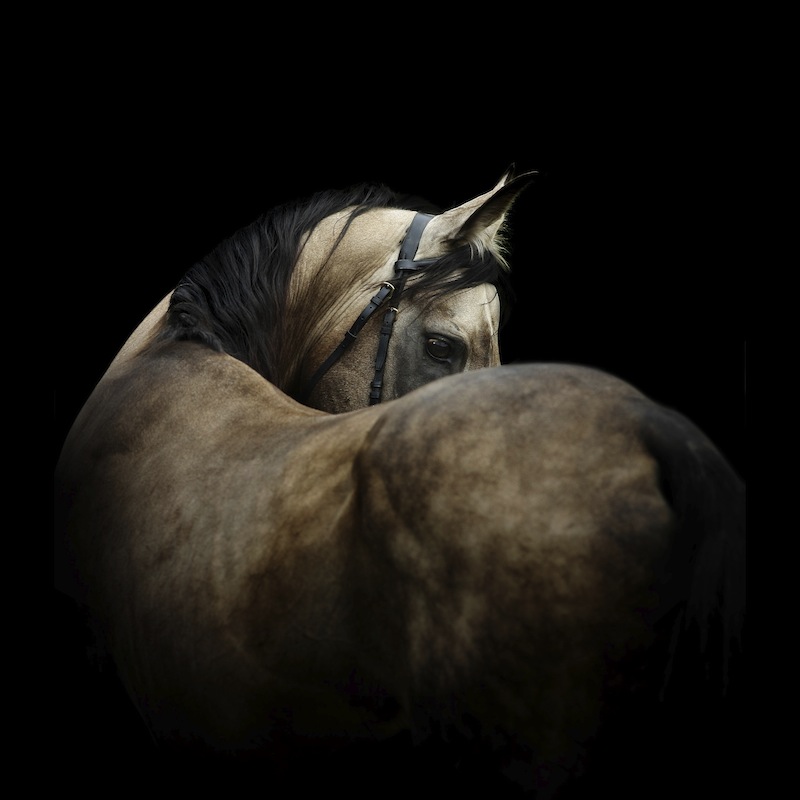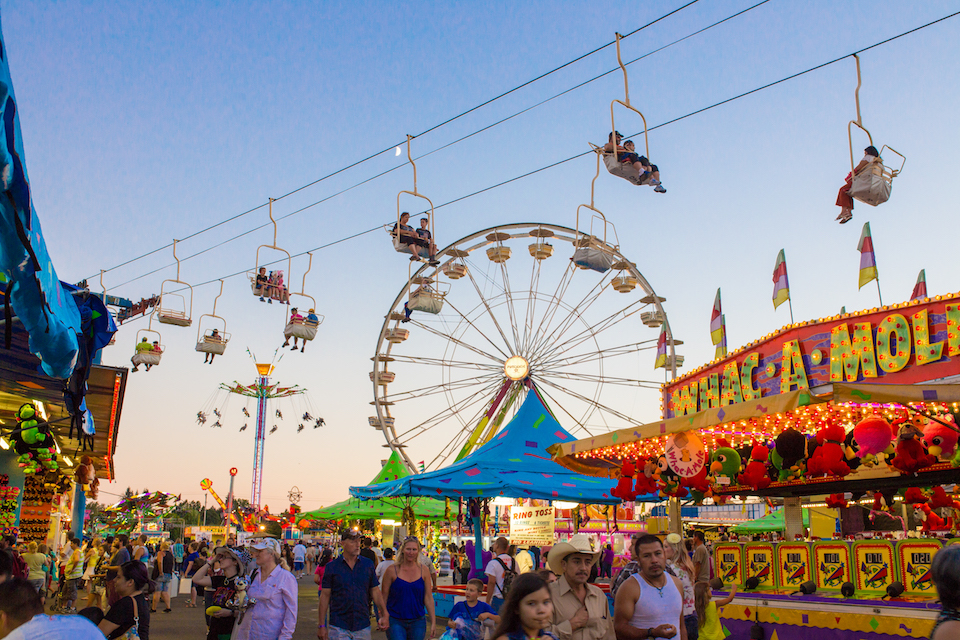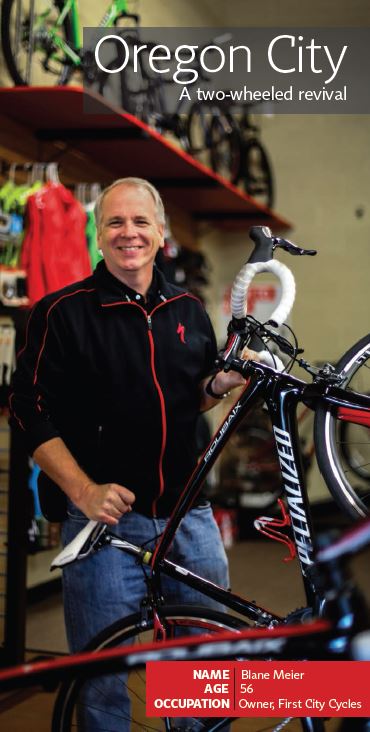THE MANY ROLES OF HORSES IN MODERN-DAY OREGON RECREATION
FEW RELATIONSHIPS RIVAL the profound rapport of horse and rider. From the rocky slopes of the Steens Moun- tain Wilderness to the crashing waves of the coast, Oregon has been the setting for nearly every equine pursuit.
Horses were reintroduced to the North American continent in the seventeenth century by Spanish explorers. Horses integrated not only into the landscape but also into Native American culture. They became central to the survival of those who later came west and settled in Oregon. They have served many roles on the farm, in the rodeo and in the Hollywood Westerns that brought Roy Rogers and John Wayne to TV sets across Ameri- ca. For many people, horses embody the symbolic free-spirited qualities of the West and serve as a testament of strength, grace, and grit through time.
Much of this history is embedded in how we ride horses to- day. The styles of riding reflect how horses have been tradi- tionally used for sport, hunting, show or—sometimes—survival. Some horse events emphasize the sophisticated traditions imported from Europe or evoke the essence of the Wild West, when a getaway was only as successful as the horse. Whether they are a part of pleasure or work, horses are a widely cel- ebrated and enduring piece of Oregon history and identity.
Endurance Riding One horse, one rider, one day these are the basic tenets of endurance riding, an extreme equine sport where going the distance matters.
Perhaps no race in Oregon embodies the spirit of endurance riding like one of the oldest races in the state, the Oregon 100, an event held in Brothers every September. The Oregon 100 started as a “ride and tie,” which involved two riders alternating running on foot and riding a horse to the finish. The spirit of this original challenge is channeled today (albeit without running) as participants saddle up each year.
Endurance rides challenge participants to cover distances ranging from twenty-five to 100 miles in given periods of time. For a sport that is competitive by nature, the culture of the riders is extremely good- natured. Most maintain that these events are a ride, not a race, and liken finishing to winning. Horse safety is paramount.
“Part of the skill is knowing your horse,” says Charleen Farrell, race manager for the Oregon 100, “It’s knowing what your horse can and can’t do.”
Farrell, 49, has been organizing the race for six years and has been an endurance rider for twice as long. She praises fellow endurance riders’ dedication to their horses’ safety. Mandatory veterinarian checks are performed before competition, throughout the race and after the ride to examine the condition of a horse.
The Oregon 100 course is staged in the desert where fifty to 150 riders make several loops through mostly flat, sandy terrain with grand vistas. In any given race, a variety of horses will be seen on the trail: from Arabians to mules, and mustangs to Tennessee Walkers. Horses have to be at least four years old to compete.
The course accommodates all sorts—novices to internationally renowned riders such as Carol Giles from Prineville. Giles had barely learned how to walk before she started riding horses and first dabbled with endurance racing in the 1980s. She returned to it in 1996 and has logged nearly 10,000 race miles since then.
A self-proclaimed “old-timer” competitor and trainer, Giles, 56, has a rich endurance riding résumé that includes representing the United States in the World Equestrian Endurance Championship held in Dubai, United Arab Emirates.
Though Giles has competed in the Oregon 100 for fifteen years, she still finds it hard to put in words. “It is my own little slice of heaven for the time,” she says. “The bond you make sitting on the back of a horse for ten to eighteen hours is enormous. I never cease to be amazed at what they do.”
Bareback Riding: The Indian Relay
Athletic prowess, speed, seamless teamwork—with perhaps a bit of luck—is what wins the Indian Relay races.
Few events offered during the five-day Pendleton Roundup rodeo are more popular than the Indian Relay, according to the director of competi- tive events, Bill Quesenberry. Participants race at breakneck speeds around the quarter-mile dirt track, saddleless.
“In those races, any day anything can happen,” Quesenberry says. “It’s a real old Wild West deal.”
Competitors must be federally recognized American Indians and work in teams of four people—one rider, one catcher and two holders—collaborating to send the rider around the track three times on three different hors- es before crossing the finish line.
After the first lap around the track on the first horse, riders make a dra- matic vault onto the back of the next horse.
“You watch them hold on to the mane with their hands wrapped up in the hair,” Quesenberry says. “I don’t know how they stay on those horses.”
According to one race participant, the answer is in the thighs and calves. “You really feel what your horses are doing,” says Katherine Minthorn Good Luck, 55, the race director for Pendleton’s Indian Relay event and long-time relay team member. Relay racing is in her blood.
A member of the Confederated Tribes of the Umatilla Indian Reservation, located just east of Pendleton, Minthorn Good Luck’s great-grandfather was one of the original tribal leaders to bring tribal members to the Pendleton Roundup in 1910. In addition to her great-grandfather, her two grandfathers and mother are in the Pendleton Roundup Hall of Fame.
The Indian relay came to Pendleton around 1927, although its true ori- gins are unclear. Several tribes claim to be the founders of the sport includ- ing the Blackfoot, Shoshone-Bannock reservation in Idaho, and the Crow tribes. Today, professional teams execute this colorful, dramatic race on a national circuit.
“It is part of the Indian culture and brings a lot of pride to Indian people,” says Minthorn Good Luck.
Race participants ride thoroughbreds mostly or quarter horses that have retired from a career on the racetrack but are still young and durable. These horses are trained out “in the field” while working with cattle, climbing slopes and crossing creeks, according to Minthorn Good Luck.
The training eventually pays off in the arena. “Those horses come out on the track, and they know what they are out there for,” says Quesenberry. “There is no fear in our Indian relay race.”
Hunter Jumper
One equine endeavor that particularly places athleticism and agility cen- ter stage is the hunter jumper style of riding. The moment a rider leans over her horse’s outstretched neck, as they sail over a hurdle, appears almost effortless. Riders, however, know this is the result of immense train- ing and discipline.
Nowhere in Oregon are these skills better showcased than at the High Desert Classics, the largest hunter jumper event in the Pacific Northwest. The High Desert Classics began in 1998 and brings about 600 to 700 horses every year. The event fills the better part of two weeks and is hosted in Bend at the foot of the Cascades.
“It’s a little city for two weeks,” says Stephanie Alvstad, executive director of J Bar J Youth Services, the organization that hosts the event. “It is its own little world.”
This forward-seated discipline features the hunt seat—based on a classic form of English riding originally adopted for fox hunting. Warmbloods, a middle-weight, tall horse originally bred in Europe, are the popular choice for hunter jumper competitions—the right amount of grace and power.
When considering the “hunter” aspect, judges observe the horse’s move- ment, form and attitude—subjectively assessing its performance. In con- trast, the “jumper” aspect takes height and speed into consideration, evaluating how quickly a horse can finish a technical course of jumps with the fewest errors, or faults (knocking poles off the jumps). Altogether, jumpers are scored for their performance over obstacles, the number they clear and if they complete the entire course in the allotted time.
The event culminates in the Grand Prix, where the riders and horses tackle a challenging course containing jumps up to five feet tall. “When a horse is cutting the corner or making a jump, people gasp—it’s intense,” Alvstadsays.“Andwhentheygoforthetriplejump,youcanfeeltheweightof the horses from their hooves hitting the ground.”
One notable feature of the High Desert Classics is a grass riding ring, a feature that annual participant, Olympic equestrian Rich Fellers, appreciates over the usual dirt.
“They take good care of the grass rings,” says Fellers. “It’s becoming more and more unusual in our sport, so it makes the High Desert Classics kind of special.”
Fellers, 54, a native Oregonian, has been competing in this event longer than he can remember and sees more Classics in his future. “As someone who loves animals and sports, nothing is better than show jumping,” he says. “I’ve been doing this since I was ten years old. I still crave it and love being with the horses.”
Portland Meadows Watching a horse open up on a track, sprinting neck and neck in a contest of speed and stamina to the finish line, produces a thrill every time. It is an emotion that Will Alempijevic, general manager of Portland Meadows, experiences time after time.
“Horses are magnificent,” he says. “They are born to run and have an unbridled passion for it.”
Portland Meadows, a racetrack tucked into North Portland, is where this dynamic equine action unfolds during the live racing season. From approximately July to December, the track offers two to three days a week filled with both quarter horse and thoroughbred races. Admission and parking are free.
Portland Meadows has had a rich history beginning when its doors opened in September 1946. The track made history that year when 10,000 people turned out to experience the first nighttime thoroughbred races in the nation, made possible by newly installed General Elec- tric light fixtures. In 1970, the track burned to the ground and was rebuilt the following year, opening to record crowds.
Today, the track is home to many jockeys during the racing season who are matched with local horses. The small size of the venue allows race fans to interact with trainers and jockeys during race days.
A long-time fixture at the track is local jockey Marijo Terleski, who got her start in racing at Portland Meadows in 1980. She will ride any event, but loves the longer thorough- bred races. “You can have speed, versatility, strategy. You can improve on their natural style,” she says.
Contrary to what some believe, it’s not al- ways sheer speed that wins the race, accord- ing to Terleski. She emphasizes the need for “mapping the speed” in some races—holding back can be as important as going all out. Timing and strategy as well as working with the personality of that horse is key to reaching the winner’s circle.
“I love the adrenaline, the fitness, the style of riding—all of it,” she muses. “It is some- thing you can always improve on and it’s never ever boring.”
Trail Riding
Trail riding options abound across the state, but two particularly notable trail rides in Oregon include C&M Stables’ beach ride and the Equestrian Wine Tours trail ride through a few of Oregon’s Pinot noir vineyards.
Owner Jeff Chastain operates C&M Stables located outside of Florence at the base of the Oregon Dunes National Recreation Area. Chastain began his business with the acquisition of a single horse three decades ago. Today, C&M Stables is home to about forty horses, many of which are available seven days a week, year-round.
Guided trips along the coast are a buck- et list item that draw many people to his stable. “A lot of people can do trail riding,” he observes. “But the open beach, the surf, the wind—all on horseback—that’s the ultimate Oregon Coast experience.”
Perhaps the ultimate wine country ex- perience is also best on horseback. Based in Carlton, Equestrian Wine Tours partners with seven wineries—all of which have hitching posts outside of their tast- ing rooms.
Riders climb on the saddle and me- ander through forested areas, hazelnut orchards and grape vines on their way to a vineyard or two. “After the first win- ery, everyone is a good rider,” owner Jake Price laughs.
Price chose Tennessee Walkers—the Cadillac of horses—for their smooth gait, running walk and easy-going attitudes. For some wine country visitors, it is these horses that keep them coming back.
“We love the horses and the personnel,” says Theresa Reed, a Washington resident who has ridden with the tour four times. Every time is different, she says, not- ing different riding routes, seasons and weather.









